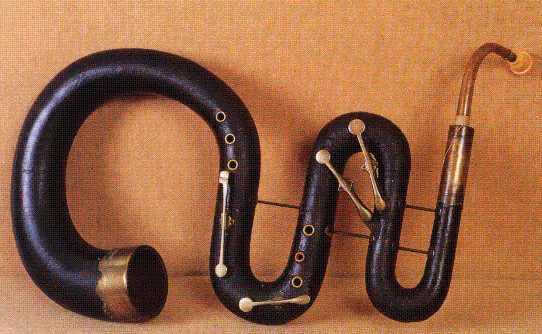serpent

A serpent is a conically bored baritone instrument, supposed to have been invented by Edme Guillaume in 1590. Like its close relative, the cornett, it is sounded by buzzing the lips into an ivory-, horn- or metal-cup mouthpiece which, in turn, agitates the air column.
Its 213-centimeter (84-inch) length is undulating in appearance, giving it its name. It is normally made out of walnut wood, although it can be found in brass or silver. The serpent originally had six finger holes, giving the instrument a compass from C to g'.
Role in the orchestra
The serpent was used in bands and orchestras to support bass lines – Handel uses it in his Music for Royal Fireworks (1789) – and was often played by bassoonists, despite the completely different playing technique required. The instrument gradually had keys added, giving a more chromatic range. This, however, did nothing to cure the problems of intonation and poor tone quality; only a skilled player could fully remedy such drawbacks, and even then the serpent received criticism.
Despite this, the serpent continued to be used well into the nineteenth century. It is often unclear which instrument a composer wanted to hear, but there is evidence to suggest that the serpent was often used in Italy by the bel canto school of Gaetano Donizetti (1797–1848) and Saverio Mercadante (1795–1870). Richard Wagner (1813–1883) was similarly vague about his intentions; in this case it normally assumed that 'serpent' actually signifies a cimbasso or other bass instrument.
Twentieth-century revival
The serpent enjoyed something of a revival in the 20th century with the advent of the early-music movement. A number of composers, including Peter Maxwell Davies (1934–2016) and Judith Weir (b. 1954) wrote for the instrument. It has, though, never taken root as permanent orchestral member.


